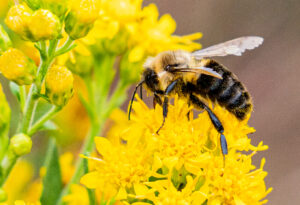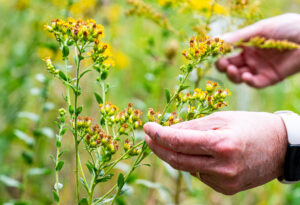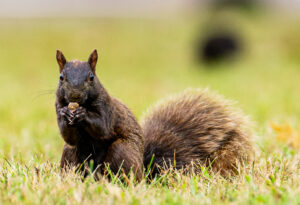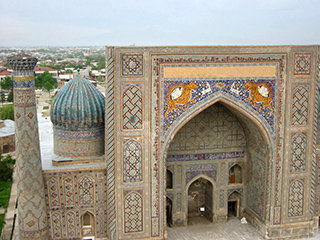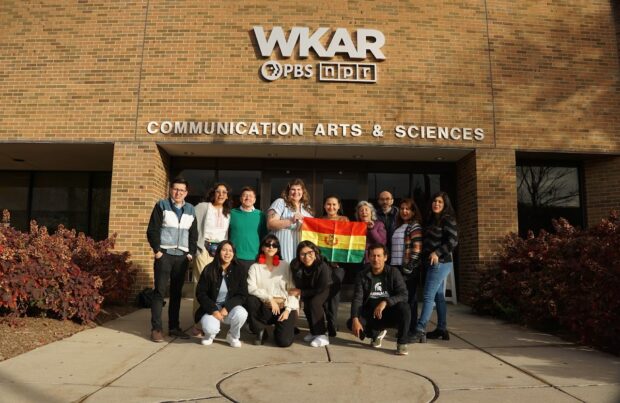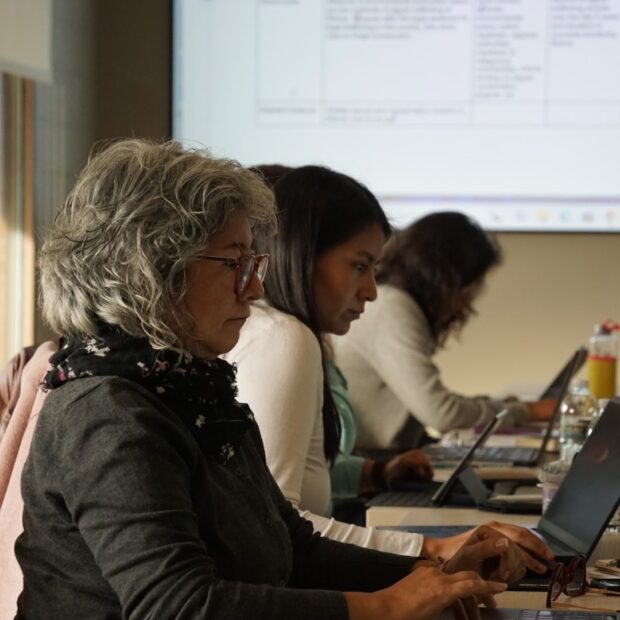Knight Center director Eric Freedman’s new feature article examining how universities can protect biodiversity appears in the spring issue of the environmental magazine Earth Island Journal with photos by journalism master’s student Donté Smith.
- A bee rests on the flower head of a stiff goldenrod plant.
- Lines of stiff goldenrod plants are inspected by Shiela Lyons-Sobaski, a biology professor at Albion College.
- An eastern gray squirrel eats his food in an open field.
In reporting the story, Freedman and Smith traveled to Albion College in southern Michigan for a campus bio-tour with prairie ecologist Sheila Lyons-Sobaski.
Freedman also interviewed Tierra Curry, a senior scientist at the Center for Biological Diversity, plant biologist William Sanders of Florida Gulf Coast University, environmental science doctoral student Mikaela Sako of Baylor University in Texas and Daniel Orenstein, an associate professor of urban and regional planning at the Israel Institute of Technology, or Technion.
The article also drew on research by scientists in Indonesia, Portugal and China.

